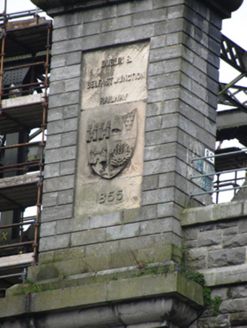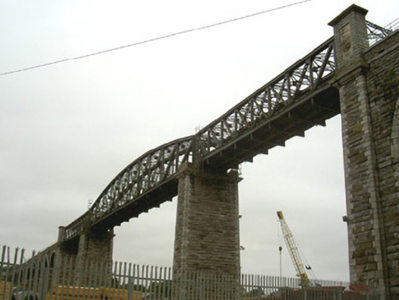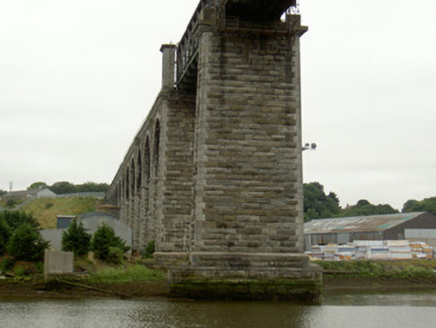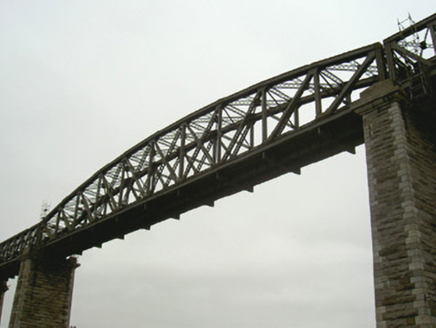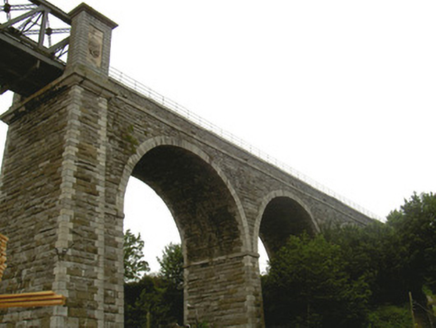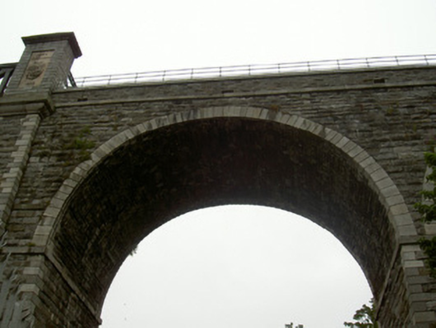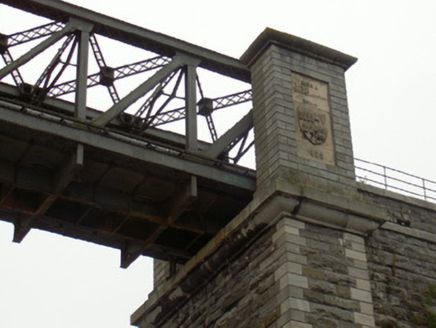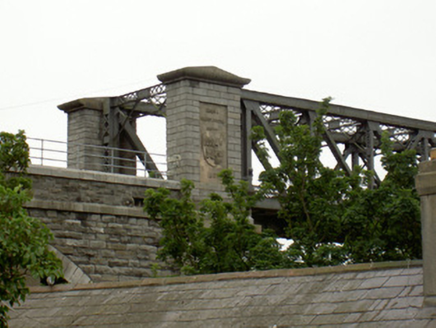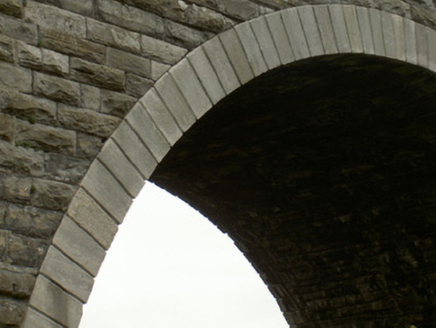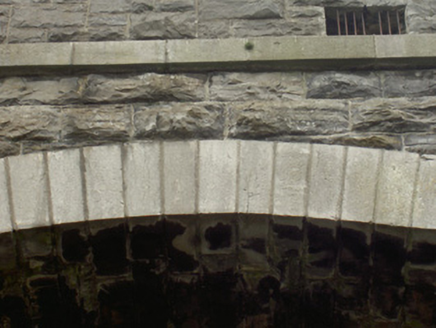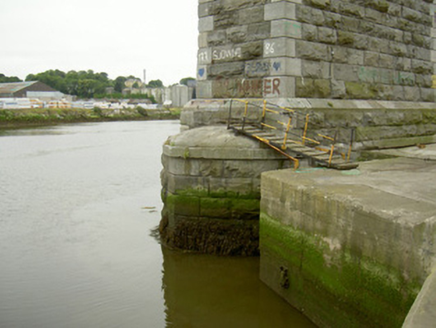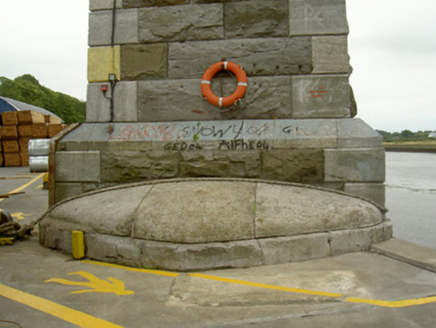Survey Data
Reg No
13620012
Rating
National
Categories of Special Interest
Architectural, Artistic, Historical, Technical
Original Use
Bridge
In Use As
Bridge
Date
1850 - 1860
Coordinates
309806, 275386
Date Recorded
22/07/2005
Date Updated
--/--/--
Description
Eighteen-span limestone and iron railway over river bridge, dated 1855. Fifteen round-headed stone arches, three north of river, twelve to south, three-span wrought-iron bolted girder trussed section crossing river 1932 with segmental-arched central section. Rock-faced ashlar limestone walling to abutments and spandrels, tooled block-and-start quoins running from base of abutments to tooled limestone stringcourse at springing line, tooled limestone voussiors to arches; tooled limestone stringcourse at deck level surmounted by rock-faced snecked limestone parapet, tooled limestone coping to parapet. Rock-faced ashlar limestone cutwaters, tooled limestone stringcourse surmounted by curved stone caps. Channelled limestone piers surmounting abutments to either side of trussed steel spans, roll-moulded rough-punched cornice surmounted by saddle-backed cap, sandstone plaque to east and west elevations of piers, with inscription "Belfast and Dublin Junction Railway" the city crests and "1855". Spans Boyne River, Drogheda railway station to south.
Appraisal
Designed by Sir John MacNeill and linking Belfast to Dublin, the Boyne Valley Viaduct dominates Drogheda. The three spans over the river were replaced in 1932 with iron trusses by the "Motherwell Bridge Engineering Company" with G.B. Howden as the chief engineer. Due to its height the bridge creates an awesome presence which is emphasised by the sheer scale of the individual elements used in its construction. Detailing such as voussoirs and quoins are elegant in their geometrical simplicity, enhanced with decorative touches in the cornices and piers, giving the structure architectural and artistic merit in addition to its pure engineering status.
